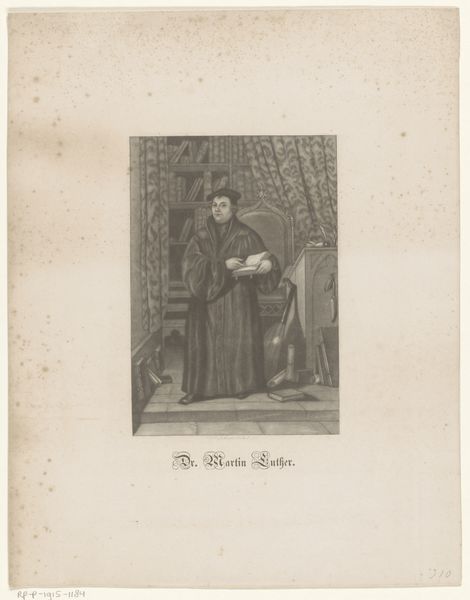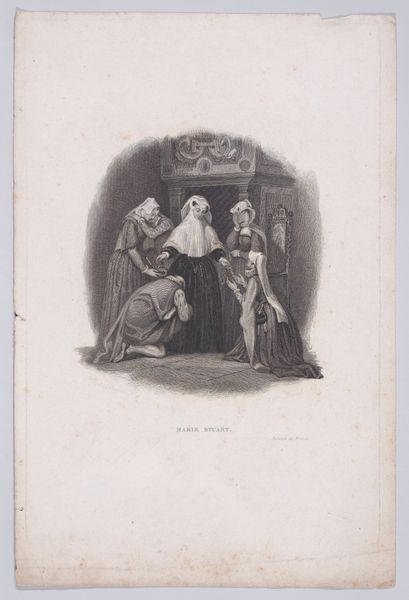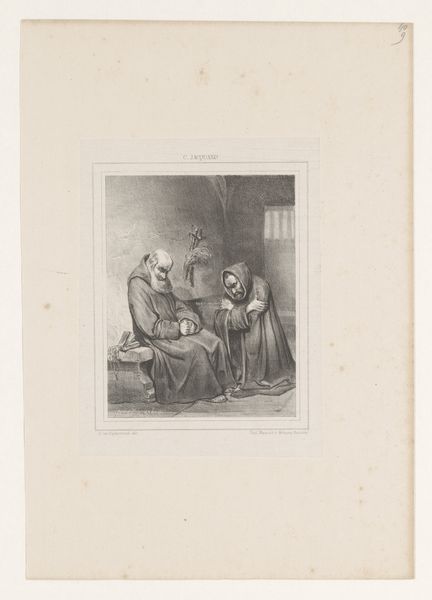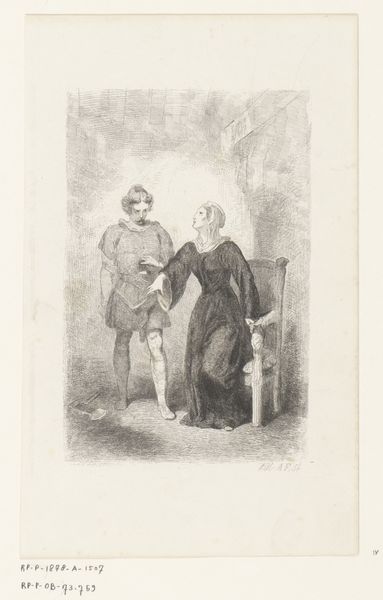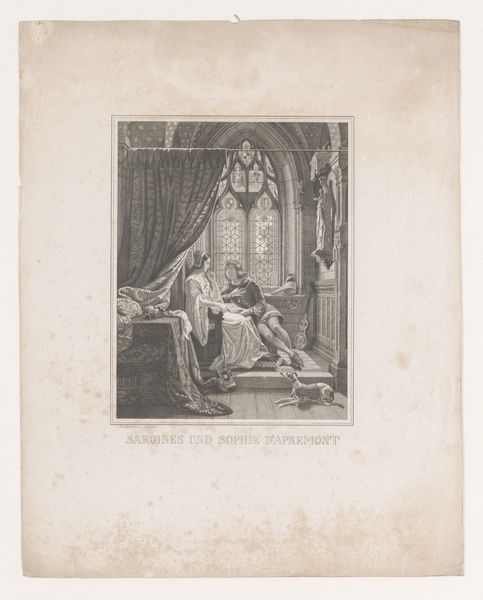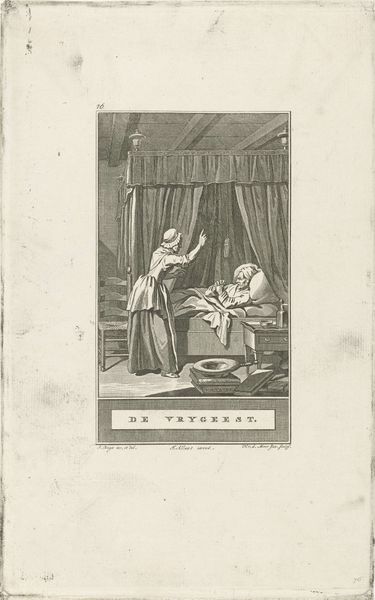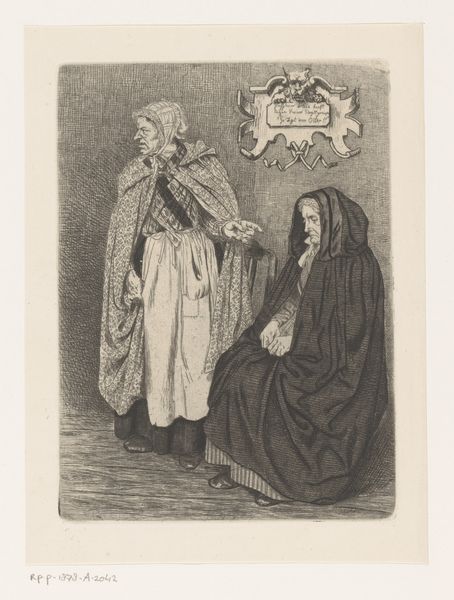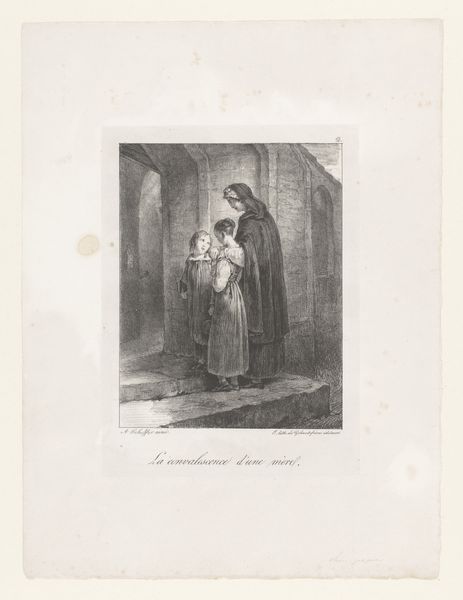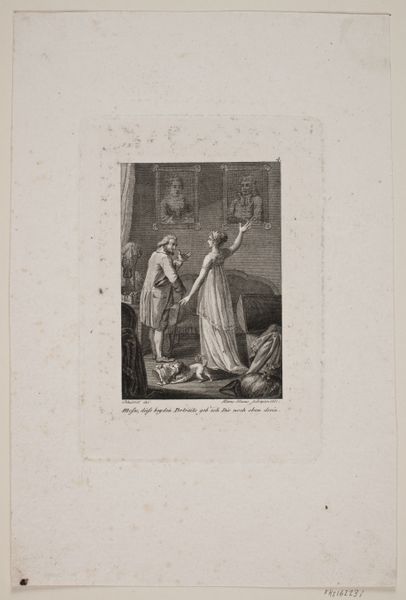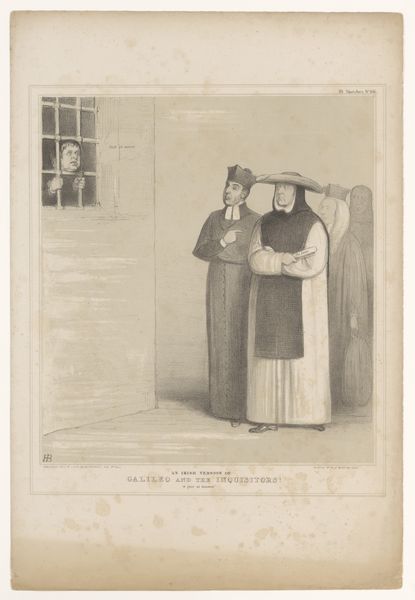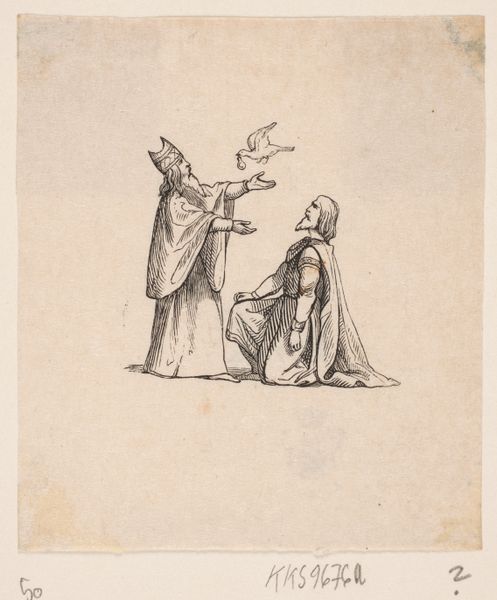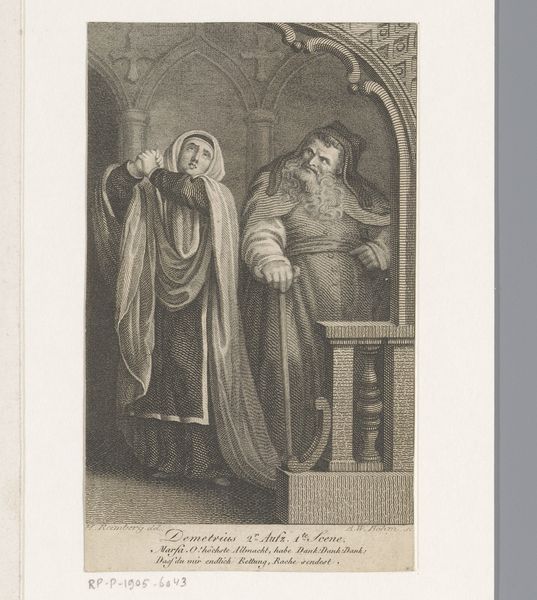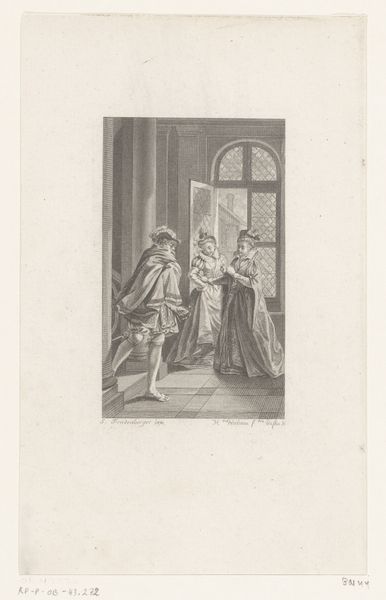
drawing, watercolor
#
drawing
#
16_19th-century
#
figuration
#
watercolor
#
romanticism
#
19th century
#
watercolour illustration
#
genre-painting
#
watercolor
Dimensions: height 360 mm, width 269 mm
Copyright: Rijks Museum: Open Domain
Curator: Welcome, everyone. We're looking at "Kruier levert een kist af bij een non," which roughly translates to "Delivery man drops off a box to a nun," a watercolor drawing by Frédéric Bouchot, dating from around 1831-1832. It’s currently housed here at the Rijksmuseum. Editor: It’s strangely charming! The muted colors give it an understated feel, but there is tension between the somber nun and the burdened but hopeful looking delivery man, or kruier. You can almost hear the thud of that crate on the tiled floor! Curator: Yes, the visual tension tells a fascinating social story. Notice the architectural details of the interior: barred windows and rather severe surroundings indicate the limitations placed on those inside the monastery at the time. Editor: Absolutely. Look closely at that crate. Its rough texture and construction suggest that it may have come from some kind of trade industry. The care with which the kruier is handling it highlights his own labor within that supply chain. I bet he put his all into this crate to please this Nun. Curator: Interesting. Consider what's *inside* the box too! Bouchot presents this moment amidst a wave of renewed interest in monastic life following periods of revolution in Europe, in which the church's role came to the foreground in French society. The items in this box would speak directly to debates around what convents could and should be contributing to the public sphere. Editor: Right! This begs questions about the nature of labor, even religious labor. What constitutes 'work' when it’s conducted within the cloistered environment? What impact does their labor and craft have on the outside society? And ultimately, what impact does a transaction have for each individual represented within? Curator: I’m intrigued how it offers insights into the perception of labor in 19th-century religious life and its contribution to the public imagination. Editor: And I keep wondering what the nun ordered. Regardless, it brings the outside, literally inside. The romantic depiction is interesting too considering they most likely labored for extended periods. It humanizes people performing tedious craft. Curator: A moment captured between social spheres of the time, then! Editor: Absolutely—a fascinating window into a world we don't often get to see visualized. Thank you for shining a light on the societal implications of Bouchot's work.
Comments
No comments
Be the first to comment and join the conversation on the ultimate creative platform.
